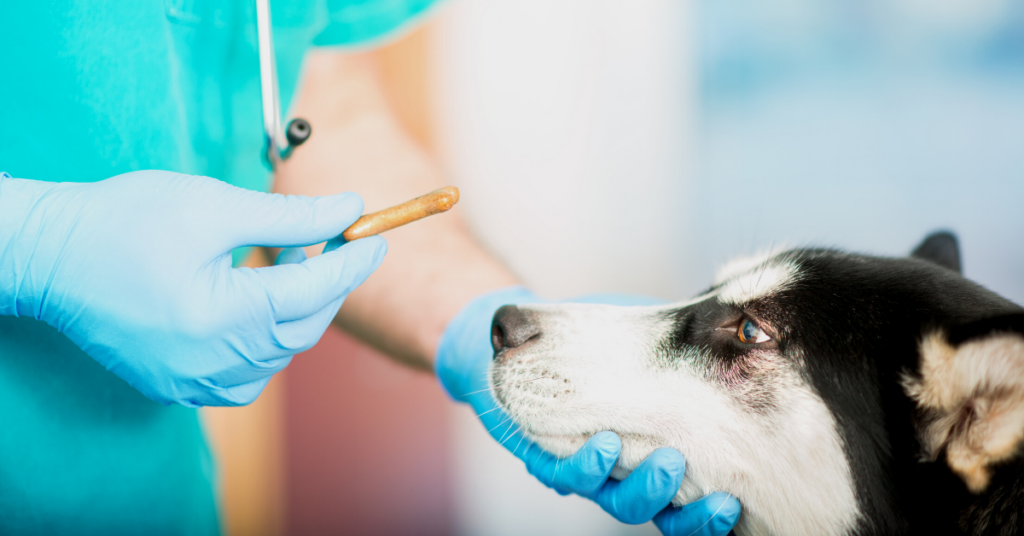Diabetes in Dogs: The Complete Guide
Reviewed by Erica L. Tramuta-Drobnis, VMD, MPH, CPH
Diabetes in dogs is a chronic illness that may affect both dogs and cats, as well as other animals (such as apes, pigs, and horses).
Although diabetes cannot be cured, it may be effectively controlled.
Diabetes mellitus, sometimes known as “sugar diabetes,” is the most common kind of diabetes in dogs. It’s a metabolic problem. The process through which the body transforms food into energy is referred to as metabolism.
The process of converting dietary nutrients into energy to operate the body’s cells is affected by two factors:
Glucose is a vital source of energy for the body’s cells. When food is digested, part of the nutrients are broken down into glucose, a form of sugar that provides energy to various bodily cells and organs. The glucose in the intestines is absorbed into the bloodstream, which subsequently carries it throughout the body.
Insulin is in charge of delivering fuel. Meanwhile, the pancreas, a vital organ located near the stomach, releases the hormone insulin into the body. Insulin serves as a “gatekeeper,” instructing cells to take glucose and other nutrients from the circulation and utilize them for energy.
What is Canine Diabetes?

Dogs with diabetes mellitus produce insufficient insulin, stop generating it entirely, or have an irregular response to insulin.
The glucose-insulin link isn’t operating properly in diabetics. There are two types of diabetes in dogs: type 1 and type 2.
Diabetes caused by a lack of insulin— When the dog’s body does not produce enough insulin, this occurs.
When the pancreas is injured or not working correctly, this occurs. Dogs with this kind of diabetes require daily injections to restore the insulin they are lacking. In dogs, this is the most frequent kind of diabetes.
Insulin-resistance diabetes occurs when the pancreas produces insulin but the body of the dog does not use it as well as it should.
Because the cells aren’t reacting to the “message” of insulin, glucose isn’t being drawn from the blood and into the cells. This kind of diabetes is more common in older, overweight dogs.
While in heat or pregnant, female dogs might develop transient insulin resistance.
Causes of Diabetes in Dogs

Obesity: Obesity increases insulin resistance and increases the risk of pancreatitis, which can lead to diabetes.
Gender: Female dogs that have not been spayed are twice as likely to develop diabetes as male canines.
Age: Diabetes may affect dogs of any age, although it is more common in middle-aged and elderly canines. The majority of dogs that get it are 5 years old or older when they are diagnosed.
Pancreatitis that is chronic or recurrent: Pancreatitis (inflammation of the pancreas) that is chronic or recurrent can eventually cause substantial damage to the organ, leading to diabetes.
Medications containing steroids: When taken over an extended period of time, they can lead to diabetes.
Cushing’s disease: is a hormonal imbalance Cushing’s disease is caused by the body’s overproduction of steroids, which can lead to diabetes.
Genetics: Diabetes can affect any breed or mix-breed dog, and heredity appears to have a role in increased or decreased risk.
According to a 2003 research, mixed-breed dogs are no more likely than purebred dogs to get diabetes.
Breeds differ in vulnerability among purebreds, with some having a very low risk and others having a larger risk.
Miniature Poodles, Bichons Frises, Pugs, Dachshunds, Miniature Schnauzers, Puli, Samoyeds, Keeshonds, Australian Terriers, Fox Terriers, Cairn Terriers, and Beagles are among the breeds that may be more susceptible.
Other medical conditions can cause diabetes in dogs. Some autoimmune illnesses and viral infections have also been linked to the development of diabetes.
Symptoms of Diabetes in Dogs

Early warning indicators. Occasionally, the owner will notice certain symptoms that could be early signs of diabetes:
The dog may drink more often and the water bowl may be emptied more frequently.
Frequent urination. The dog may regularly request to go outdoors and may begin to have “accidents” within the home.
The body tries to get rid of excess sugar by passing it out through urine, along with water that attaches to the sugar. This causes increased urination (and thirst).
In addition, weight loss can be a sign of diabetes. Despite eating regular meals, the dog might lose weight. This is due to the dog’s inability to convert nutrients from its meal effectively.
Even if the dog eats a typical amount of food, the dog may always feel hungry because the body’s cells aren’t getting enough glucose.
Advanced warning indications. Symptoms of diabetes can grow more severe as the disease progresses, and they might include appetite loss, energy deficiency, depressed state of mind, vomiting.
Diagnosis of Diabetes in Dogs

Simple tests, such as checking for excessive glucose (sugar) in the blood and urine, can be performed by your veterinarian to rule out diabetes.
Other diabetic symptoms, such as increased liver enzymes and electrolyte abnormalities, can be detected by blood testing.
The sooner diabetes is detected and treated, the greater the chances are for the pet to have a normal life.
Treatment of Diabetes in Dogs

Your diabetic dog’s diet will be recommended by your veterinarian. This will usually include some high-quality protein, as well as fiber and complex carbs to assist decrease glucose absorption.
A diet with a reduced fat content may also be recommended by your veterinarian.
It is especially crucial for diabetic dogs to maintain a moderate but constant exercise schedule to avoid unexpected spikes or decreases in glucose levels.
The majority of diabetic dogs will require daily insulin injections under the skin, which the owner will have to learn to administer.
Although it’s fair to be concerned about doing so, it’s not as difficult as it may appear. It may easily become a short and painless daily ritual for both the dog and the owner.
Despite the fact that some instances may be more difficult to control, canine diabetes is typically handled successfully and without problems.
You will take the key role in your dog’s care, from providing injections to testing glucose levels on a regular basis, and your dedication to keeping up with his daily vaccinations and monitoring is crucial.
Your veterinarian will collaborate with you to come up with the optimal management strategy for your dog.
This may require frequent visits to the clinic for testing and medication adjustments at the beginning of treatment, but hopefully the right combination of medication, dosage, diet, and home monitoring will be found soon, allowing you to keep your dog’s blood sugar consistent and help him live a full, happy life.
When to See a Veterinarian

If you suspect your dog has diabetes, or notice signs like excessive thirst, frequent urination, or being hungry all the time.
It’s best to contact your vet to come up with the optimal management strategy for your dog.
If you believe your dog is at risk for developing diabetes, have him tested at least once a year at a routine veterinarian visit.
Your veterinarian’s diabetic treatment plan for your dog will most likely contain information on insulin shots for your dog and how to administer them, diet and exercise suggestions, a daily glucose-monitoring system tailored to your dog’s needs, and any warning indicators to be aware of.







